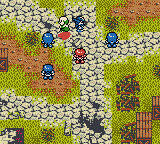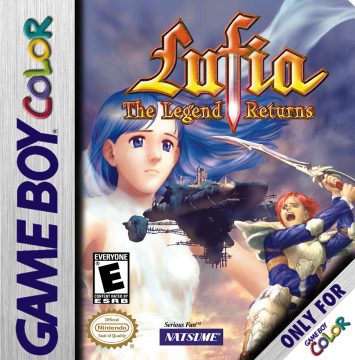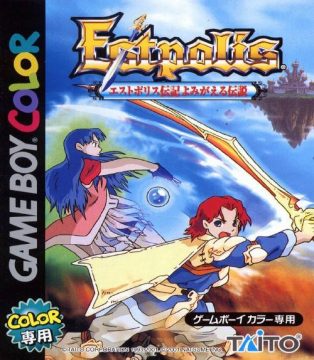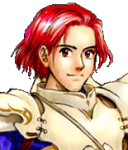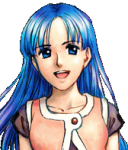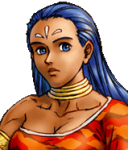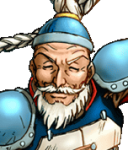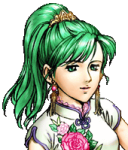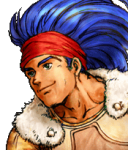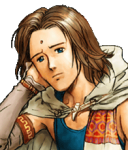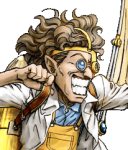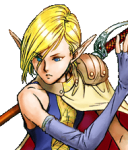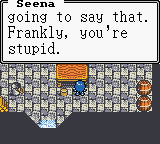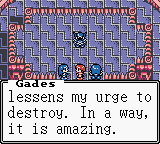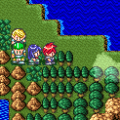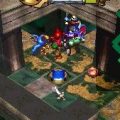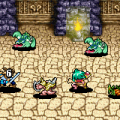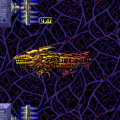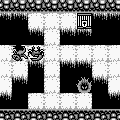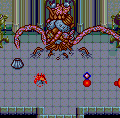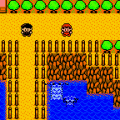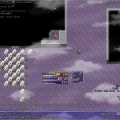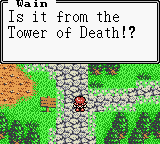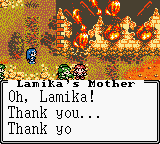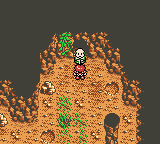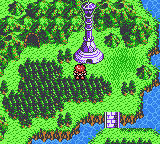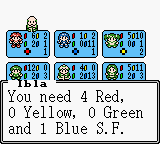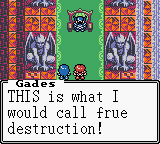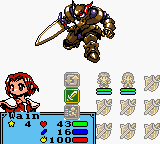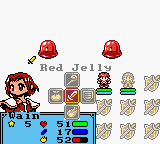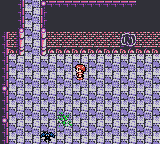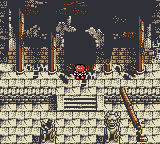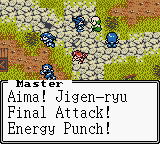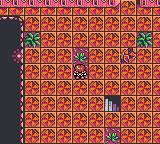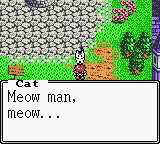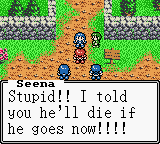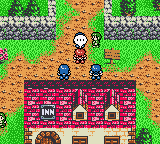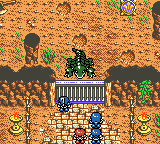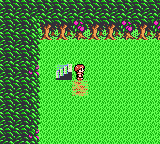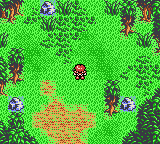For awhile, Taito teased a third Lufia entry for the PlayStation. However, development was shift instead to the Game Boy Color, and the end result is significantly different from the SNES entries. Lufia: The Legend Returns is focused almost entirely on dungeon crawling, and drops almost all of the puzzle elements. The game’s visual style is much more anime influenced, and also features the first display of blood in the series.
Characters
Wain
The main character. He is your standard Big Dumb Fighter. He even has a running joke around the character’s stupidity, with villains (and other possible party members) calling him stupid, with him objecting.
Aima
A monk who joins the party after her mentor was kidnapped by a group of bandits terrorizing her town.
Melphis
A princess exiled to a haunted lighthouse who joins the party so she can see the outside world and help her people.
With the shift back to dungeon crawling comes a change to the way the dungeons are designed. Now each level of the dungeon is randomly generated, and changed every time you revisited a level. Even when the party ascends back out of the dungeon after completing their objective, the levels they were re-traversing would be different then they were when they came back through them the first time. Each level would have hidden treasure chests, either in secret chambers which could be found by slashing specific areas of the walls, or underneath shrubs in the various rooms in the dungeon. There would also be traps as well, which could stun the party, confuse them, or deal damage. As with the earlier games, though, the player can see monsters in the dungeon, and attempt to avoid them with some skill.
The party size in the game has increased to more than all of the earlier games in the series, with a sum total of 9 characters being available in the party at one time, divided between 3 columns of 3 characters each. During each turn in combat, one character per column can act. Characters in the front and back ranks can be targeted by enemies, and the party is defeated if their 3 front-rank characters are defeated.
Lufia: The Legend Returns also overhauls the skill system. In Lufia II, a character’s IP skills were determined by the weapons they had equipped. This game, on the other hand, uses a somewhat more traditional skill system. As the party explores dungeons, various chests will have Ancient Scrolls, which allow characters to learn IP Skills. Different skills can be learned by different characters. Which characters can learn which skills appears to be based by concept (thieves can learn sneak attack and theft related skills, female characters can learn cooking, etc.). IP skills can be used once the character’s IP meter has built-up enough to use the skill. More powerful skills require characters to level up their Spiritual Force, a concept new to this game.
Each character has a different color of Spiritual Force: Red, Green, Blue, or Yellow. Each kind of spiritual force provides a bonus to different abilities. Red increases Strength and general attack skill, Blue increases Intelligence and Wisdom (and thus magic attack and defense power). Yellow increases a characters MP and Agility (which determines when they act). Green effects HP and defense abilities. Each character has only one type of Spiritual force for themselves. The Spiritual Force of characters can also flow between them based on their formation – characters in the same row and column share Spiritual Energy. Characters can increase their spiritual energy by using Learning Points (which are different than Experience Points). If the player changes the party’s formation so that a character doesn’t have the same SF levels they needed to learn a specific skill, the IP cost to use that skill will increase.
As the party wins battles, the party’s shared pool of Learning Points increases. In addition to spending LPs on Spiritual Energy, they can also be used to purchase new spells, instead of using money, as with the first two games, from the priests in each town. Thus, the player has to manage their Learning Points based on whether they want to get new spells, or increase the Spiritual Force of various party members so they can learn a new skill, or otherwise increase their abilities.
In general, while the story in this game is presented just as well as earlier titles in the series, the shift in focus to dungeon crawling doesn’t work very well, and makes playing the game somewhat dull. Further, the way the dungeons work doesn’t lend them well to to portable gaming. Ultimately, while this game isn’t terrible, it’s not great either. Fans of the series will be disappointed by the lack of the puzzle dungeons from the second game, and people who are new to the franchise will likely similarly find the dungeons too tedious to be fun.
